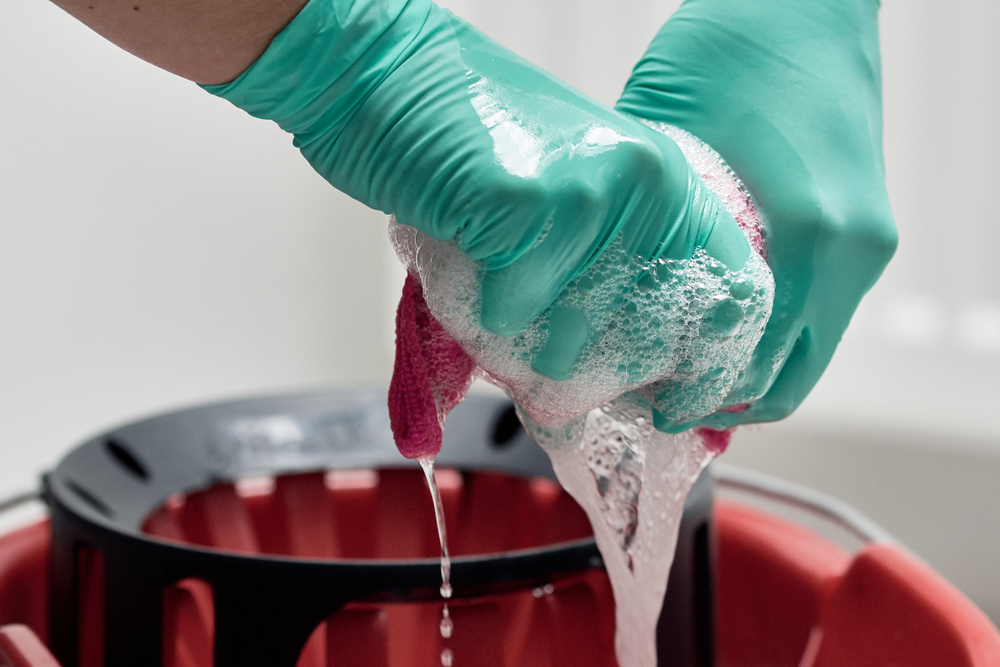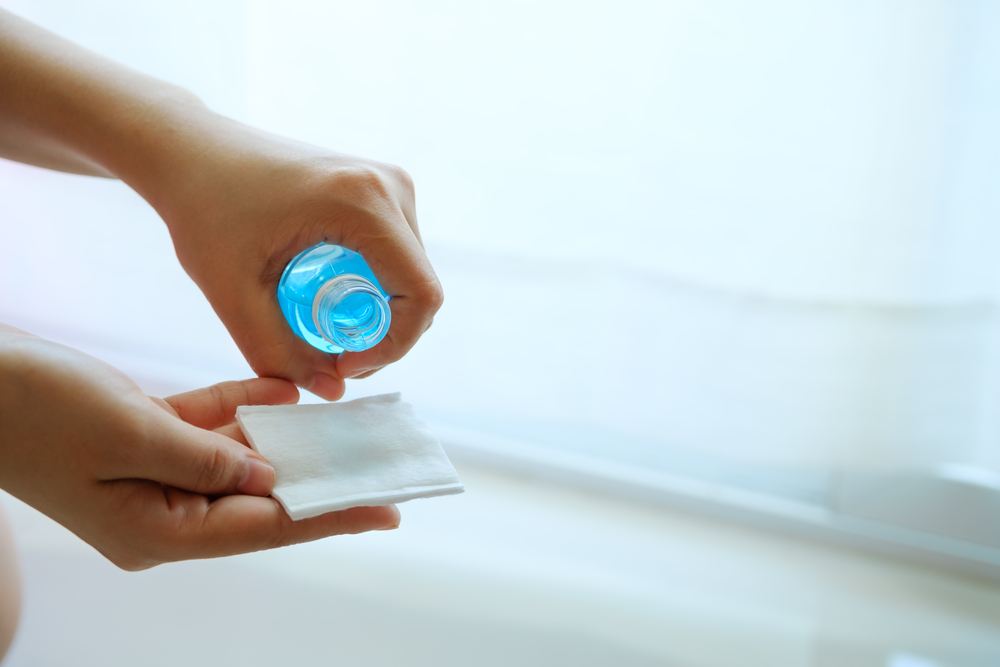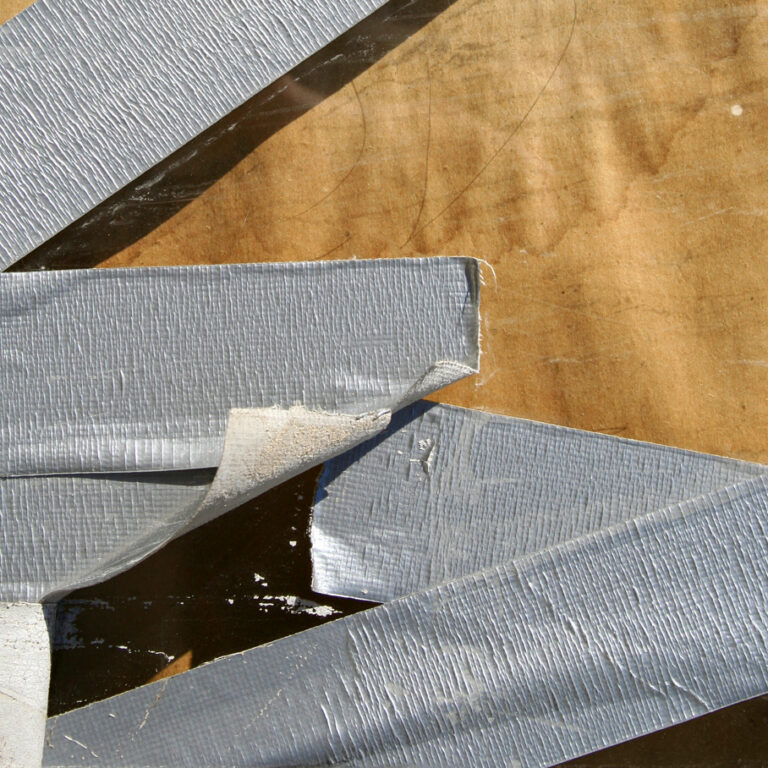As helpful and versatile as many adhesive tapes are, with their ability to stick to anything and in any type of environmental condition, these products can become a stressful hassle when you go to remove them and are instead presented with a large patch of tape residue.
This residue is leftovers from the adhesive that held the tape in place and can be a long-lasting issue if you aren’t sure how to properly remove it.
Fortunately, we’ve collected the best options for removing tape residue to help you out. In this article, you can learn the main options for removing this residue and which methods are the best when applied to some common household surfaces.
Your Best Options for Removing Tape Residue
There are many ways to remove tape residue, but some of them are more effective than others. Below, we have a list of the most effective ways to remove tape residue from around your home.
Remember, before attempting any of these methods, that it is a good idea to perform a spot test in a small separate area of the surface you are removing residue from. This will help prevent massive staining or potential damage that can happen if you start removing residue without an idea of the side-effects for a particular method.
Scrape the Residue
A fairly foolproof method, scraping at the residue is an easy way to quickly remove it. For this method to work, you should have something like a putty knife or a butter knife. Hold the knife parallel to the surface you are working on, so as not to scratch it, and use gentle, slow scraping strokes.
Start from one end of the residue and work your way to the other, making sure to be patient and not rush your progress, as this could damage the surface you are removing the residue from.
Use Hot Water
Hot water can soften the adhesive left behind by tape, making it easier for you to scrub away any residue. For this method, get a small bowl or bucket of hot soapy water and use a sponge or a microfiber cloth.
- Scrub the area with small strokes in a back and forth motion.
- If the residue still doesn’t seem to be lifting after a few minutes, soak the area in the hot soapy water for up to 20 minutes, and then give it another scrub.
- After the residue is gone, wipe the area dry to remove any last traces of adhesive.
Apply Heat
Similar to using hot water, applying an outside source of heat, like from a hair dryer, can weaken the adhesive and encourage it to lift off of the surface in question.
Apply heat with a hair dryer for up to a minute. You can start to scrape the residue off while you are applying heat, or you can wait until the minute is up and then work at removing the residue. Just be sure not to wait too long, or the adhesive will harden again, becoming difficult to remove.
Use Baking Soda
You may not want to use a soap and sponge in some areas where tape residue is found, but you still want to try scrubbing the residue away. In these cases, you can create a paste made of a spoonful of baking soda and a little bit of water.
Apply the paste to the residue in question and use a soft brush, such as a toothbrush, to scrub the area in a gentle circular motion. You can then rinse the area with cool water, removing the paste and revealing a residue-free surface.
Apply Pressure
For many outdoor surfaces, it can be difficult to take a sponge or a hair dryer in order to remove tape residue. You may also find that tape residue in these areas is more stubborn. In these instances, we recommend trying out a pressure washer or a sand blaster.
These machines can remove seriously stubborn residue, but you should take caution when using it, as they can also damage walls or leave marks when not used correctly.
Use Alcohol
Alcohol, like that in rubbing alcohol, nail polish remover, or even straight vodka, can loosen and dissolve the adhesive in tape residue. You can apply your chosen alcohol to a small cotton pad and rub it over the residue, effectively weakening and removing it.
Be careful not to use alcohol-based products on sensitive painted surfaces, or you risk staining and discoloration.
Commercial Removal Products
These are products, such as Goo Gone, that offer safe sticker and tape residue removal from many surfaces without any scrubbing needed. Simply apply the product to a cloth or sponge and swipe it over the area to remove residue.
Items like these can be a great investment if you are constantly needing to remove tape or other adhesive residue without too much fuss.
Lubricants
Lubricants include products like WD-40, which has long been thought of as a solution to stubborn tape residue.
- You can apply a small amount of this to a microfiber cloth or other cleaning cloth with texture. Allow it to soak in a little bit.
- Then, scrub at the tape residue, removing it.
- Follow up with warm water and soap to remove any oil traces.
Because there is oil in this product, you should not use this method on anything that will become stained or damaged through contact with the WD-40.

Most Common Areas That Need Tape Residue Removal
These areas are the most common when it comes to needed tape residue removed. We’ve highlighted the best ways to remove residue in these areas, so you have a cheat sheet next time residue removal is required.
Walls
With walls, especially painted walls, it is easiest to scrape at the residue or use heat to help weaken the residue for removal. You should avoid using things like soapy water or alcohol on walls, as you run the risk of stains or damage with these methods.
Carpets
It can be tricky to remove residue from carpets, as it often sinks into the fibers, making complete removal almost impossible. On carpets, we actually recommend using the opposite of heat – get an ice cube and rub it over the residue until the adhesive hardens more. From there, you can scrape to remove it.
With carpets, if you apply heat, water, or any type of alcohol, you run the risk of creating a mess, ruining your carpet, and still not removing all of the tape residue.
Windows
It is fairly safe to use any of tape residue removal methods with windows, save for pressure washing; the same goes from any type of glass or metal product. Hot soapy water, alcohol, or commercial products are the best choices for removing residue on these surfaces.
Countertops
Most countertops are water and stain resistant. It is generally safe to use any of the tape residue removal methods on them, though they typically respond best to hot water and scraping.
Hardwood Floors
It is easy to damage hardwood floors, so you must be careful when trying to remove residue from these surfaces. Commercial cleaners like Goo Gone are the best option for this surface, as you don’t need a lot of scrubbing, scraping, or a lot of water to remove the residue.
Clothing
It can be difficult to remove tape residue from clothing, but it is not impossible.
- Scrape as much of the residue off with your fingers as possible
- Then place the clothing item in a freezer. This will harden up the remaining adhesive for your next round of removal.
- Once the clothing item has been in the freezer for approximately an hour, take it out and scrape off any other visible areas of residue.
- You can then add a drop or two of detergent directly to the area and rub it in with a sponge or microfiber cloth.
- After the residue is gone, wash and dry the clothing like normal.
It is important to note that you should never tumble dry a clothing item with residue still on it, as this will essentially “bake” the residue into the clothing, making complete removal in the future almost impossible.

Preventing Tape Residue
Now that you know how to remove tape residue, you may be wondering how to stop residue from occurring in the first place.
Remove Tape After a Year
To prevent tape residue, it is important to update your tape in areas that need tape long-term. Tape usually lasts for a year, so if there are areas of your home that permanently have tape on them, try to replace it every year to prevent residue or an adhesive build up when the tape finally does come off.
Make Sure Surfaces Are Clean Before Applying Tape
Additionally, make sure that the surface you are applying tape to is clean and dry before application. This ensures that there is no dirt, grease, or other grime that the adhesive could hold onto when you remove the tape, preventing residue.
Consider Residue-Free Tape
You can also invest in tapes that offer residue-free removal if you frequently use tape and want to ensure the removal of it is residue free every time.
Residue Removal for a Clean Home
Removing tape residue is not the most exciting activity, but it doesn’t have to be a stressful one. With the proper residue removal methods, you can easily remove residue from any type of surface in record time, leaving you with a residue-free surface and a clean home.
